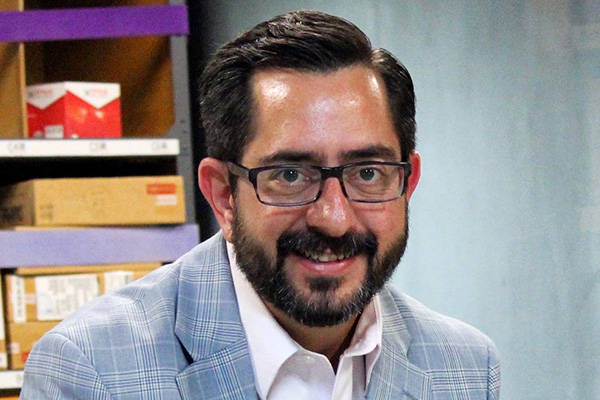ProMat C-Suite Interview: Christopher Barber, CEO of North America at GreyOrange
Unlike fixed automation, robots scale easily and layouts can be modified as needs change.

Q: What is your number one takeaway from ProMat 2019?
Christopher Barber: Robotics and supply chain automation have become commonplace. Compared to just a couple of years ago, there are more suppliers and more users. The industry is making the transition from fixed automation to robotics. We are at a juncture very similar to the mid-1980s when computers were first taking their place in manufacturing and distribution. Clearly, big changes are coming.
Furthermore, robots come in different forms whether they are follow-me, cobots, pick-and-place or other types. Unlike fixed automation, they scale very easily with fast payback. As needs and conditions change, layouts can be modified opening the door to new options to adapt.
Q: What are the three key market trends from your perspective?
Christopher Barber: At this point, consumers are choosing who they buy from based on how quickly they can receive their purchase. That puts enormous pressure on warehouse operations to respond immediately to orders and get them out the door accurately.
We are also in the time of the multi-channel consumer. They expect to have full access to a retailer’s stock whether they interface online or in a store. Being able to satisfy that expectation puts retailers in an unfamiliar position. They have to peel back their layers of software, hardware and inventory/order tracking to be truly omni-channel. Oh, and they have to consolidate inventory to a single setting to satisfy orders regardless of origin. That takes technology and money, and maybe half of retailers can either do it today or are on a path to it. The others haven’t even started the journey.
The third trend is sustainability. More and more companies now present sustainability as a requirement when evaluating inventory handling systems. Four or five years ago they only talked about it. Today, it’s part of the request for proposal.
Q: How is GreyOrange reacting to these market trends?
Christopher Barber: We have a product roadmap that looks out three years plus. It’s all about flexible, scalable robotic solutions from picking to sorting. The technology must be able to adapt to changing consumer expectations and how those impact warehouse operations. Key words in the roadmap right now include speed, accuracy, scalability, rapid delivery, to name a few.
To get there, we are building equipment and systems that learn using AI and are fit to meet changing requirements in the DC. For instance, we might think there’s little relationship between red and white polo shirts. But consumers are ordering them together with very high frequency. That requires a system to learn from this trend and accommodate it in the name of efficiency and speed. So robots and other types of automation have to be able to adapt tomorrow to a new layout or process in order to maintain productivity even as consumer trends shift.
I heard a term the other day that resonates. Elastic logistics. What that means is we no longer have to design to peaks. Instead, we can use automation to adapt to a wide range of conditions including peaks. It’s not easy, but it is possible with robotics.
To learn more about GreyOrange, click here.

Article Topics
Automation News & Resources
Walmart chooses Swisslog AS/RS and software for third milk processing facility Lucas Watson appointed CSO for Körber’s Parcel Logistics business in North America 60 Seconds with Bob Trebilcock, outgoing executive editor, Modern Materials Handling Kathleen Phelps to join FORTNA as chief financial officer Coles automates grocery distribution in Australia 2024 Intralogistics Robotics Survey: Robot demand surges Warehouse automation extends life of cheese DC by a decade More AutomationLatest in Materials Handling
Registration open for Pack Expo International 2024 Walmart chooses Swisslog AS/RS and software for third milk processing facility NetLogistik partners with Vuzix subsidiary Moviynt to offer mobility solutions for warehouses Materials Handling Robotics: The new world of heterogeneous robotic integration BSLBATT is looking for new distributors and resellers worldwide Lucas Watson appointed CSO for Körber’s Parcel Logistics business in North America Hyster recognizes Dealers of Distinction for 2023 More Materials HandlingSubscribe to Materials Handling Magazine

Find out what the world's most innovative companies are doing to improve productivity in their plants and distribution centers.
Start your FREE subscription today.
April 2024 Modern Materials Handling

Latest Resources










